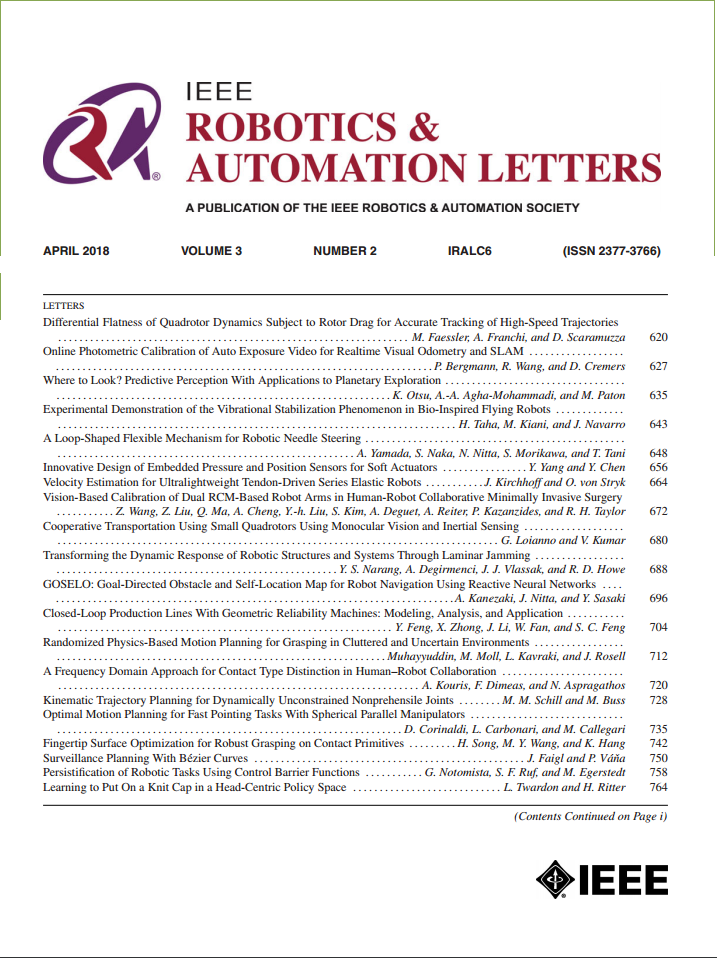IMH-MOT:用于多目标跟踪的交互式多层图像和点云融合
IF 4.6
2区 计算机科学
Q2 ROBOTICS
引用次数: 0
摘要
多目标跟踪(MOT)在自动驾驶和监控等应用中起着至关重要的作用。基于相机的方法为物体关联提供了丰富的纹理特征,而基于激光雷达的方法为空间推理提供了准确的几何信息。尽管每种模态都面临不同的挑战,但它们内在的差异阻碍了有效的跨模态融合和统一表征学习。为了克服这些限制,我们提出了IMH-MOT,这是一个由三个关键模块组成的交互式多层MOT框架。多模态对齐模块(MMAM)通过采样和聚类实例级点云来增强空间表示。多模态运动估计模块(MMEM)将来自不同模态的运动线索整合起来,建立统一的运动模型。为了减轻遮挡对单帧外观特征的影响,长期外观模块(LAM)通过构建长期外观嵌入来捕获时间外观一致性。在MMAM模式感知线索的引导下,MMEM生成可靠的空间表征,而LAM编码稳健的长期外观特征。这些组件通过多层数据关联(MHDA)策略联合集成,实现稳定和准确的跟踪。在KITTI MOT基准测试上进行的大量实验证明了该框架的有效性,在标准和具有挑战性的场景下,该框架的HOTA达到80.90%,MOTA达到89.73%,IDSW达到470,优于最先进的方法。本文章由计算机程序翻译,如有差异,请以英文原文为准。
IMH-MOT: Interactive Multi-Hierarchical Image and Point Cloud Fusion for Multi-Object Tracking
Multi-object tracking (MOT) plays a critical role in applications such as autonomous driving and surveillance. Camera-based approaches offer rich texture features for object association, while LiDAR-based methods provide accurate geometric information for spatial reasoning. Although each modality addresses different challenges, their intrinsic discrepancies hinder effective cross-modal fusion and unified representation learning. To overcome these limitations, we propose IMH-MOT, an interactive multi-hierarchical MOT framework comprising three key modules. The Multi-modality Alignment Module (MMAM) enhances spatial representations by sampling and clustering instance-level point clouds. From different modalities are motion cues integrated by the Multi-modality Motion Estimation Module (MMEM) to build a unified motion model. To mitigate the impact of occlusion on single-frame appearance features, the Long-term Appearance Module (LAM) captures temporal appearance consistency by constructing a long-term appearance embedding. Guided by modality-aware cues from MMAM, MMEM generates reliable spatial representations, while LAM encodes robust long-term appearance features. These components are jointly integrated through a Multi-hierarchical Data Association (MHDA) strategy, enabling stable and accurate tracking. Extensive experiments on the KITTI MOT benchmark demonstrate the effectiveness of our framework, achieving 80.90% HOTA, 89.73% MOTA, and 470 IDSW, outperforming state-of-the-art methods in both standard and challenging scenarios.
求助全文
通过发布文献求助,成功后即可免费获取论文全文。
去求助
来源期刊

IEEE Robotics and Automation Letters
Computer Science-Computer Science Applications
CiteScore
9.60
自引率
15.40%
发文量
1428
期刊介绍:
The scope of this journal is to publish peer-reviewed articles that provide a timely and concise account of innovative research ideas and application results, reporting significant theoretical findings and application case studies in areas of robotics and automation.
 求助内容:
求助内容: 应助结果提醒方式:
应助结果提醒方式:


